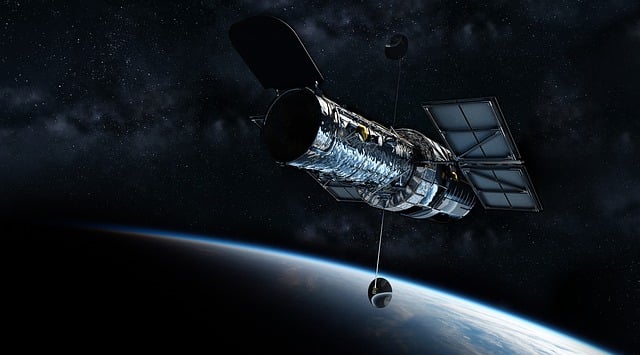Connecting Strategy to The Future with Strategic Foresight
Why Modern Telescopes—and Leaders—Depend on Signal Scanning

True confession: until not that long ago, I thought telescopes were by definition something you look through to view something far away. So when I saw pictures of newer telescopes like this one, I was confused – obviously that’s not the way these work. Rather, these telescopes are collecting data – signals – that can be assembled into the image of what scientists think is out there but can’t be seen (yet). Signals are at the heart of strategic foresight (aka, futurism) as well. Last week I took a deep dive into foresight, completing a series of courses offered by the Institute for the Future, and it’s got me thinking about connecting strategy to the future.
Often, when the Lab is working with a group, we’ll start with developing a framing question that paints a picture of a future they’d like to move toward. Good framing questions have emotional heft to them, pulling people into the conversation because they connect to their inner passions and values. At the same time, framing questions can’t seem completely unattainable (as Ed Morrison used to say, they should be “aspirational, but not hallucinatory.”). Usually, they look several years into the future.
There is, however, a place for exploring futures that seem very unlikely and even undesirable. That’s the playing field for strategic foresight.
What Is Strategic Foresight? (Hint: It’s Not Prediction)
Strategic foresight is not prediction. It’s looking at the signals that point to just-emerging-trends, in order to help explore possible futures and their implications. Seeing what might lie ahead positions a group to have a conversation about what their role might be in one or more of those futures. Foresight often looks much further into the future than a strategic planning process. The pictures the futures paint are not goals – they’re more like environments in which the organization may – or may not – have a role.
Looking Back: Signals We Missed in AI, Remote Work & Populism
To get my mind wrapped around what kinds of possible futures a group might consider, I find it helpful to think about what a strategic foresight process should have picked up 10-15 years ago if they had engaged with those tools. A few signals that were around then pointed to trends that have since become very important: AI, remote work, populism, ubiquitous smartphones for children and teens (and the accompanying social media fascination). Which of those did your organization see coming? Which did you miss?
Now do the thought experiment in reverse: what things are you just starting to hear about now? What would the world, your community, or your organization be like if that became an important trend? That’s strategic foresight.
Making the leap from the future to organizational strategy
How does foresight connect to an organization’s strategy?
First, foresight sets up the obvious next questions: if that’s what’s happening in the world, what might that mean for us, and what actions should we be taking now? Two examples, particularized for organizations: if every 12-year-old has a smartphone, how will that change the way kids and families interact with our summer camp? If people can work anywhere they want, does our city’s economic development program need to rethink our “place” strategy?
Second, foresight reminds us that things can change. Most strategic plans assume a continuation of what’s happened in the last few years – but you don’t want to miss a disruption that’s right around the corner. Using an agile process for planning and implementation lets you take small steps while you keep your eyes (and options) open for environmental change.
Third, foresight builds your organization’s mental flexibility – the flexibility that is the foundation for the collaborative habits we help people and organizations build in our trainings. Some of the big things that happen had very faint signals. The pandemic is a good example: people in the world of health were paying attention, but most of the rest of us weren’t. But if we’re used to having those “if x happens, then what?” conversations, we have a head start on responding to the next disruption.
Ready to Build Your Organization’s Flexibility?
Whether you’re already seeing a signal or not, we can help you unlock your organization’s foresight advantage—book a 30-minute discovery call with our team. We’ll walk through your most pressing “what-if” questions and how we can help.

Liz shepherds the expansion of the Lab’s programming and partnerships with other universities interested in deploying agile strategy tools. A co-author of Strategic Doing: 10 Skills for Agile Leadership, she also focuses on the development and growth of innovation and STEM education ecosystems, new tool development, and teaching Strategic Doing.
